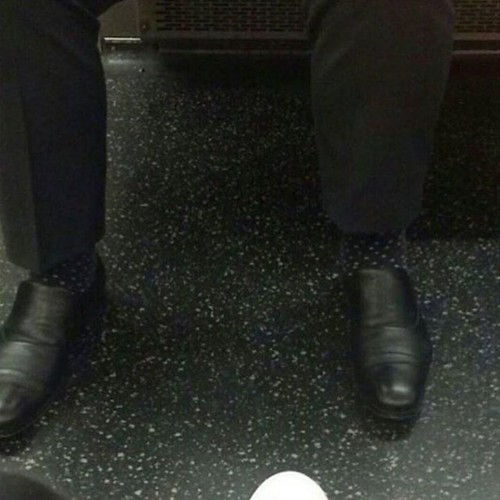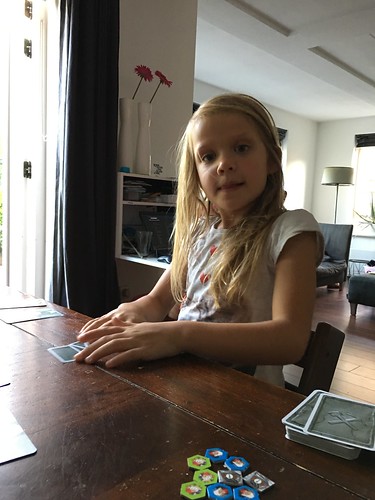FMRI study of `SB203580 web theory of mind’ in verbal and nonverbal tasks. Neuropsychologia 38, 11?1. doi: ten.1016/S0028-3932(99)00053-6 Gianelli, C., Scorolli, C., and Borghi, A. M. (2011). Acting in viewpoint: the part of physique and language as social tools. Psychol. Res. 77, 40?two. doi: ten.1007/s00426011-0401-0 Gregg, M., Hall, C., and Butler, A. (2010). The MIQ-RS: a appropriate selection for examining movement imagery capacity. Evid. Based Complement. Alternat. Med. 7, 249?57. doi: 10.1093/ecam/nem170 Grezes, J., Pichon, S., and De Gelder, B. (2007). Perceiving worry in dynamic body expressions. Neuroimage 35, 959?67. doi: 10.1016/j.neuroimage.2006.11.030 Grush, R. (2004). The emulation theory of representation: motor manage, imagery, and perception. Behav. Brain Sci. 27, 377?96. doi: 10.1017/S0140525X04000093 Hall, C. R., and Martin, K. A. (1997). Measuring movement imagery skills: a revision from the movement imagery questionnaire. J. Ment. Imagery 21, 143?54.
The idea of Theory of Thoughts (ToM) has significantly changed considering  that its very first proposal inside the paper Premack and Woodruff ‘s (1978). Focusing the interest on humans and in distinct on human acquisition has posed methodological issues, that are still at problem. The aim of first human studies was to understand how young youngsters acquire the representation of others’ mental states, in particular beliefs, and how they distinguish them from their own and from reality. To test the acquisition of this major conceptual modify Wimmer and Perner (1983) designed the False Belief Job. In line with children’s performance on this test the acquisition of ToM has been shown to emerge at around 4 years of age. In recent years a brand new trend emerged: researchers have located solutions to confirm the capacity of passing the false belief test in a great deal younger youngsters. Clements and Perner (1994) very first showed that it can be feasible to assess implicit comprehension of false beliefs in AEB-071 3-years-olds monitoring the path of their gaze. Other researchers, employing the violation of expectation paradigm have established that also 15-month-old-children may perhaps attribute to an agent a false belief in regards to the place of an object (Baillargeon et al., 2010). These new outcomes have generated what Perner and Roessler (2012) contact a puzzle about belief. Why do 3-year-old kids fail the classical false belief tasks whereas much younger young children show the appropriate expectation in the spontaneous response tasks? The query I intend to go over here concerns the incredibly existence of a puzzle. Are implicit and explicit false belief tasks comparable? To go over this point let us analyze 1st the partnership involving the false belief job and ToM.Frontiers in Psychology | www.frontiersin.orgAugust 2015 | Volume 6 | ArticleAirentiThe puzzle of belief ascriptionThe Improvement of ToM as well as the False Belief TaskThe value attributed towards the false belief activity with respect to the improvement of ToM has been criticized previously. As an illustration, Bloom and German (2000) argued that passing the false belief task requires other skills apart from ToM and conversely that ToM cannot be reduced to the capability to pass the false belief process. In a comparable vein Apperly (2012) argues that there is a lot more to ToM than obtaining a conceptual grasping of mental states. In his view ToM can also be a set of cognitive processes as well as a social competence attesting to individual variability; then no single process could be deemed because the proper “measure of ToM” across development. In contrast, th.FMRI study of `theory of mind’ in verbal and nonverbal tasks. Neuropsychologia 38, 11?1. doi: ten.1016/S0028-3932(99)00053-6 Gianelli, C., Scorolli, C., and Borghi, A. M. (2011). Acting in perspective: the role of body and language as social tools. Psychol. Res. 77, 40?2. doi: 10.1007/s00426011-0401-0 Gregg, M., Hall, C., and Butler, A. (2010). The MIQ-RS: a appropriate choice for examining movement imagery capability. Evid. Primarily based Complement. Alternat. Med. 7, 249?57. doi: ten.1093/ecam/nem170 Grezes, J., Pichon, S., and De Gelder, B. (2007). Perceiving worry in dynamic body expressions. Neuroimage 35, 959?67. doi: 10.1016/j.neuroimage.2006.11.030 Grush, R. (2004). The emulation theory of representation: motor manage, imagery, and perception. Behav. Brain Sci. 27, 377?96. doi: ten.1017/S0140525X04000093 Hall, C. R., and Martin, K. A. (1997). Measuring movement imagery skills: a revision from the movement imagery questionnaire. J. Ment. Imagery 21, 143?54.
that its very first proposal inside the paper Premack and Woodruff ‘s (1978). Focusing the interest on humans and in distinct on human acquisition has posed methodological issues, that are still at problem. The aim of first human studies was to understand how young youngsters acquire the representation of others’ mental states, in particular beliefs, and how they distinguish them from their own and from reality. To test the acquisition of this major conceptual modify Wimmer and Perner (1983) designed the False Belief Job. In line with children’s performance on this test the acquisition of ToM has been shown to emerge at around 4 years of age. In recent years a brand new trend emerged: researchers have located solutions to confirm the capacity of passing the false belief test in a great deal younger youngsters. Clements and Perner (1994) very first showed that it can be feasible to assess implicit comprehension of false beliefs in AEB-071 3-years-olds monitoring the path of their gaze. Other researchers, employing the violation of expectation paradigm have established that also 15-month-old-children may perhaps attribute to an agent a false belief in regards to the place of an object (Baillargeon et al., 2010). These new outcomes have generated what Perner and Roessler (2012) contact a puzzle about belief. Why do 3-year-old kids fail the classical false belief tasks whereas much younger young children show the appropriate expectation in the spontaneous response tasks? The query I intend to go over here concerns the incredibly existence of a puzzle. Are implicit and explicit false belief tasks comparable? To go over this point let us analyze 1st the partnership involving the false belief job and ToM.Frontiers in Psychology | www.frontiersin.orgAugust 2015 | Volume 6 | ArticleAirentiThe puzzle of belief ascriptionThe Improvement of ToM as well as the False Belief TaskThe value attributed towards the false belief activity with respect to the improvement of ToM has been criticized previously. As an illustration, Bloom and German (2000) argued that passing the false belief task requires other skills apart from ToM and conversely that ToM cannot be reduced to the capability to pass the false belief process. In a comparable vein Apperly (2012) argues that there is a lot more to ToM than obtaining a conceptual grasping of mental states. In his view ToM can also be a set of cognitive processes as well as a social competence attesting to individual variability; then no single process could be deemed because the proper “measure of ToM” across development. In contrast, th.FMRI study of `theory of mind’ in verbal and nonverbal tasks. Neuropsychologia 38, 11?1. doi: ten.1016/S0028-3932(99)00053-6 Gianelli, C., Scorolli, C., and Borghi, A. M. (2011). Acting in perspective: the role of body and language as social tools. Psychol. Res. 77, 40?2. doi: 10.1007/s00426011-0401-0 Gregg, M., Hall, C., and Butler, A. (2010). The MIQ-RS: a appropriate choice for examining movement imagery capability. Evid. Primarily based Complement. Alternat. Med. 7, 249?57. doi: ten.1093/ecam/nem170 Grezes, J., Pichon, S., and De Gelder, B. (2007). Perceiving worry in dynamic body expressions. Neuroimage 35, 959?67. doi: 10.1016/j.neuroimage.2006.11.030 Grush, R. (2004). The emulation theory of representation: motor manage, imagery, and perception. Behav. Brain Sci. 27, 377?96. doi: ten.1017/S0140525X04000093 Hall, C. R., and Martin, K. A. (1997). Measuring movement imagery skills: a revision from the movement imagery questionnaire. J. Ment. Imagery 21, 143?54.
The concept of Theory of Thoughts (ToM) has significantly changed because its very first proposal inside the paper Premack and Woodruff ‘s (1978). Focusing the interest on humans and in unique on human acquisition has posed methodological challenges, which are still at problem. The aim of initial human studies was to understand how young children acquire the representation of others’ mental states, in distinct beliefs, and how they distinguish them from their own and from reality. To test the acquisition of this main conceptual modify Wimmer and Perner (1983) developed the  False Belief Job. According to children’s efficiency on this test the acquisition of ToM has been shown to emerge at around four years of age. In current years a new trend emerged: researchers have found approaches to verify the capacity of passing the false belief test in a lot younger kids. Clements and Perner (1994) 1st showed that it really is achievable to assess implicit comprehension of false beliefs in 3-years-olds monitoring the direction of their gaze. Other researchers, using the violation of expectation paradigm have verified that also 15-month-old-children may well attribute to an agent a false belief about the place of an object (Baillargeon et al., 2010). These new benefits have generated what Perner and Roessler (2012) contact a puzzle about belief. Why do 3-year-old children fail the classical false belief tasks whereas significantly younger youngsters show the right expectation in the spontaneous response tasks? The question I intend to talk about here issues the quite existence of a puzzle. Are implicit and explicit false belief tasks comparable? To go over this point let us analyze initially the connection between the false belief job and ToM.Frontiers in Psychology | www.frontiersin.orgAugust 2015 | Volume 6 | ArticleAirentiThe puzzle of belief ascriptionThe Improvement of ToM plus the False Belief TaskThe importance attributed towards the false belief task with respect for the development of ToM has been criticized previously. As an illustration, Bloom and German (2000) argued that passing the false belief task demands other abilities apart from ToM and conversely that ToM can’t be decreased towards the capacity to pass the false belief job. In a comparable vein Apperly (2012) argues that there is certainly a lot more to ToM than having a conceptual grasping of mental states. In his view ToM can also be a set of cognitive processes plus a social competence attesting to person variability; then no single job is usually regarded as the suitable “measure of ToM” across improvement. In contrast, th.
False Belief Job. According to children’s efficiency on this test the acquisition of ToM has been shown to emerge at around four years of age. In current years a new trend emerged: researchers have found approaches to verify the capacity of passing the false belief test in a lot younger kids. Clements and Perner (1994) 1st showed that it really is achievable to assess implicit comprehension of false beliefs in 3-years-olds monitoring the direction of their gaze. Other researchers, using the violation of expectation paradigm have verified that also 15-month-old-children may well attribute to an agent a false belief about the place of an object (Baillargeon et al., 2010). These new benefits have generated what Perner and Roessler (2012) contact a puzzle about belief. Why do 3-year-old children fail the classical false belief tasks whereas significantly younger youngsters show the right expectation in the spontaneous response tasks? The question I intend to talk about here issues the quite existence of a puzzle. Are implicit and explicit false belief tasks comparable? To go over this point let us analyze initially the connection between the false belief job and ToM.Frontiers in Psychology | www.frontiersin.orgAugust 2015 | Volume 6 | ArticleAirentiThe puzzle of belief ascriptionThe Improvement of ToM plus the False Belief TaskThe importance attributed towards the false belief task with respect for the development of ToM has been criticized previously. As an illustration, Bloom and German (2000) argued that passing the false belief task demands other abilities apart from ToM and conversely that ToM can’t be decreased towards the capacity to pass the false belief job. In a comparable vein Apperly (2012) argues that there is certainly a lot more to ToM than having a conceptual grasping of mental states. In his view ToM can also be a set of cognitive processes plus a social competence attesting to person variability; then no single job is usually regarded as the suitable “measure of ToM” across improvement. In contrast, th.
